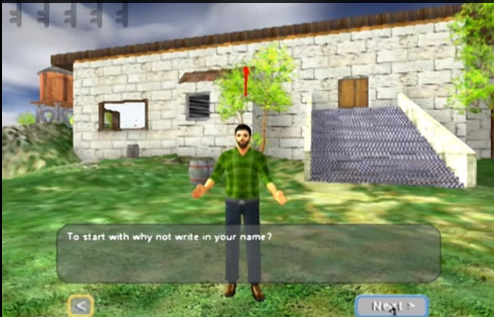The Computer Game That Helps Therapists Chat to Adolescents With Mental Health Problems
One of the fundamental principles of modern psychology is that its success must be based on effective communication and a strong therapeutic relationship between the patient and therapist.

That’s particularly hard to achieve when adolescents are involved. Young people experiencing mental health problems can often react confrontationally, or not at all, to a therapist. So finding effective ways of engaging adolescents is an important goal.
Today, David Coyle at the University of Bristol and Gavin Doherty at Trinity College Dublin outline the work they’ve done on a computer game called gNats Island which is specifically designed to facilitate communication between therapists and adolescents between the ages of 10 and 15.
The game involves exploring a tropical island where visitors meet a team of wildlife explorers. These characters introduce various concepts associated with cognitive behavioural therapy (CBT). “For example negative automatic thoughts, a key concept in CBT, are presented as little creatures called gNats that can sting people, causing negative thinking,” say Coyle and Doherty.
Various conversations with the explorers show players how to identify and deal with challenging thoughts using metaphors such as catching, trapping and swatting gNats.
A key aspect of the game is that the therapist and adolescent sit together at the computer. But instead of talking face-to-face, the therapist acts as a partner in the adolescent’s exploration of the island.
That’s a significant change to the traditional relationship between therapist and patient but has been well received so far. Coyle and Doherty say that more than 750 mental health professionals in Ireland, UK and the US have received training in the gNats game since it was launched in 2011.
“Therapists who used gNats Island with adolescents were very positive about the way in which the game changed the dynamics of the therapeutic interaction,” they report. For example, the game-based interaction between therapist and patient can take place without the usual level of eye contact, which can be difficult for adolescents with mental health problems.
The bottom line is that it enhances the engagement between the patient and the therapist and that this helps to build a positive relationship between them.
That’s an interesting and innovative approach to mental health therapy which clearly has more potential. To that end, Coyle and Doherty have other technology-based projects designed to facilitate engagement between therapist in patients in various different ways. It’ll be interesting to see how widely they end up being used.
Ref: arxiv.org/abs/1307.3164 : Supporting Therapeutic Relationships and Communication about Mental Health
Keep Reading
Most Popular
Large language models can do jaw-dropping things. But nobody knows exactly why.
And that's a problem. Figuring it out is one of the biggest scientific puzzles of our time and a crucial step towards controlling more powerful future models.
The problem with plug-in hybrids? Their drivers.
Plug-in hybrids are often sold as a transition to EVs, but new data from Europe shows we’re still underestimating the emissions they produce.
Google DeepMind’s new generative model makes Super Mario–like games from scratch
Genie learns how to control games by watching hours and hours of video. It could help train next-gen robots too.
How scientists traced a mysterious covid case back to six toilets
When wastewater surveillance turns into a hunt for a single infected individual, the ethics get tricky.
Stay connected
Get the latest updates from
MIT Technology Review
Discover special offers, top stories, upcoming events, and more.